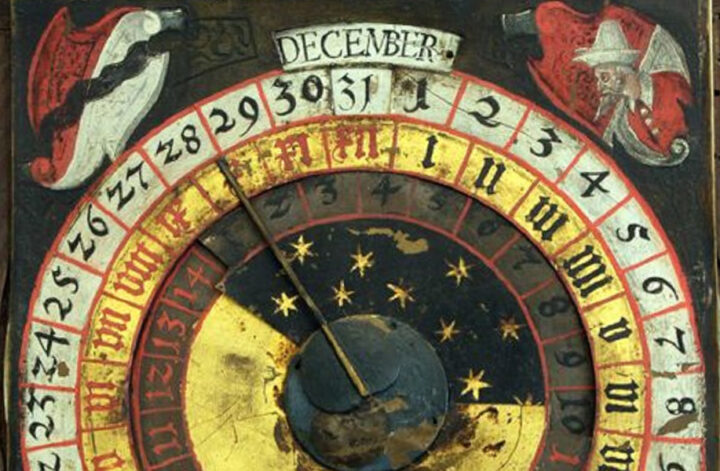Resolved, That the flag of the United States be thirteen stripes, alternate red and white; that the union be thirteen stars, white in a blue field, representing a new Constellation.
From a flag resolution passed by the Second Continental Congress on June 14, 1777.
Flag Day isn’t a Hallmark holiday. We don’t give Flag Day gifts. We don’t have Flag Day feasts or parties. Flag Day is sort of the overlooked sibling of the Fourth of July in the patriotic holiday pantheon. It’s a quiet holiday; but it is entirely worthwhile to be celebrating Flag Day.
It’s amazing how much of what we think we know about how our flag is based on oral history. We all have an idea of how the flag came to be and how to care for and display our flag. But the official US Flag code isn’t something you’ll find on many coffee tables as recreational reading. So for celebrating Flag Day, we present a few flag FAQs.
Betsy Ross sewed the first flag, right?
Maybe. We all learned in fourth grade history that our first flag was sewn by a humble Philadelphia upholsterer named Betsy Ross with design direction from George Washington. What we didn’t learn is that although there is a rich oral history that supports this legend, there is no written evidence. In fact, according to the Betsy Ross house website, it was not until 1870, almost a hundred years after the flag came to be that Ms. Ross’s grandson called attention to her historic contribution.
Who came up with the idea of Flag Day?
Celebrating Flag Day as a national holiday has an ambiguous origin story. About 100 years after the flag resolution of 1777, four or five different groups in different places at different times proposed a national holiday to honor the flag. They probably all deserve a share of the credit. It was not officially declared a holiday until 1949, when President Harry Truman signed it into law.
When can you fly a flag?
According to the federal Flag Code, it is the universal custom to display the flag only from sunrise to sunset on buildings and on stationary flagstaffs in the open. However, when a patriotic effect is desired, the flag may be displayed 24 hours a day if properly illuminated during the hours of darkness.*
Can the flag be flown so it touches anything?
Nope. The flag should never touch anything beneath it, such as the ground, the floor, water, or a pile of sale merchandise.* But if it happens by accident, there’s no need to panic (more info to follow below).
How do you display a flag on a car?
The flag should not be draped over the hood, top, sides, or back of a vehicle or of a railroad train or a boat. When the flag is displayed on a motorcar, the staff should be fixed firmly to the chassis or clamped to the right fender.* For draping your car, use bunting.
If you see a flag with the blue field down, what does it mean?
Someone is in trouble, because the flag should never be displayed with union down, except as a signal of dire distress in instances of extreme danger to life or property.* If you’re writing a suspense novel and you need a good secret signal, this might be it.
Can I decorate myself or my house with a flag?
According to the code, the flag should never be used as wearing apparel, bedding, or drapery. It should never be festooned, drawn back, nor up, in folds, but always allowed to fall free. Bunting of blue, white, and red, always arranged with the blue above, the white in the middle, and the red below, should be used for covering a speaker’s desk, draping in front of the platform, and for a decoration in general.*
What do the colors of the flag mean?
According to the American Legion, white signifies purity and innocence; red, hardiness and valor; and blue signifies vigilance, perseverance, and justice.^
What are the color specifications for the proper shades of red, white and blue?
For all you detail fanatics, the exact shades of blue and red [used in the flag] are numbers 70075 and 70180 in the Standard Color Card of America published by the Color Association of the United States. In the Pantone system the colors are: Blue PMS 282 and Red PMS 193.^
What do I do if my flag gets dirty?
Per the American Legion FAQs: Care should be exercised in the handling of the flag, to protect it from becoming soiled or damaged. However, you are not required to destroy the flag if it touches the ground. As long as the flag remains suitable for display, even if washing or dry-cleaning (which is an acceptable practice) is required, the flag may continue to be displayed.
What do I do if my flag is no longer in good enough condition to honor my country?
Again, per the American Legion: The Flag Code suggests that when a flag has served its useful purpose, “it should be destroyed, preferably by burning.” For individual citizens, this should be done discreetly so the act of destruction is not perceived as a protest or desecration.
FYI: Many veterans groups like the American Legion and the VFW accept flags for disposal. Some groups also accept flags that have been used for funerals to be reused.
Now that you have even more reasons for celebrating Flag Day, read more about the flag and how to fly it, you can visit the sites I did: the American Legion flag FAQs (^) and the Congressional Research Service PDF on laws regarding the flag (*).





1 comment
I really enjoyed your article, and I learned a few new things, too. Thank you for sharing this information!